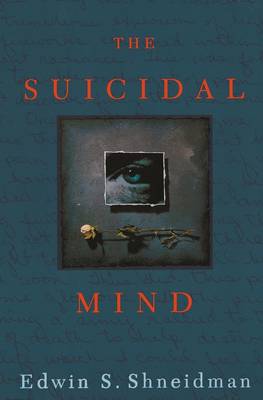
- Afhalen na 1 uur in een winkel met voorraad
- Gratis thuislevering in België vanaf € 30
- Ruim aanbod met 7 miljoen producten
- Afhalen na 1 uur in een winkel met voorraad
- Gratis thuislevering in België vanaf € 30
- Ruim aanbod met 7 miljoen producten
Omschrijving
In The Suicidal Mind, Dr. Shneidman has written a groundbreaking work which brims with insight into the suicidal impulse and with helpful suggestions on how to counteract it. Shneidman presents a bold and simple premise: the main cause of suicide is psychological pain or "psychache." Thus the key to preventing suicide is not so much the study of the structure of the brain, or the study of social statistics, or the study of mental diseases, as it is the direct study of human emotions. To treat a suicidal individual, we need to identify, address, and reduce the individual's psychache. Shneidman shares with the reader his knowledge, both as a clinician and researcher, of the psychological drama that plays itself out in the suicidal mind through the exploration of three moving case studies. We meet Ariel, who set herself on fire; Beatrice, who cut herself with the intent to die; and Castro, a young man who meant to shoot his brains out but survived, horribly disfigured. These cases are presented in the person's own words to reveal the details of the suicidal drama, to show that the purpose of suicide is to seek a solution, to illustrate the pain at the core of suicide, and to isolate the common stressor in suicide: frustrated psychological needs. Throughout, Shneidman offers practical, explicit maneuvers to assist in treating a suicidal individual - steps that can be taken by concerned friends or family and professionals alike. Suicide is an exclusively human response to extreme psychological pain, a lonely and desperate solution for the sufferer who can no longer see any alternatives. In this landmark and elegantly written book, Shneidman provides the language, not only for understandingthe suicidal mind, but for understanding ourselves. Anyone who has ever considered taking their own life, or knows someone who has, will find here a wealth of insights to help understand and to prevent suicide.
Specificaties
Betrokkenen
- Auteur(s):
- Uitgeverij:
Inhoud
- Aantal bladzijden:
- 208
- Taal:
- Engels
Eigenschappen
- Productcode (EAN):
- 9780195118018
- Verschijningsdatum:
- 23/04/1998
- Uitvoering:
- Paperback
- Formaat:
- Trade paperback (VS)
- Afmetingen:
- 137 mm x 201 mm
- Gewicht:
- 136 g

Alleen bij Standaard Boekhandel
Beoordelingen
We publiceren alleen reviews die voldoen aan de voorwaarden voor reviews. Bekijk onze voorwaarden voor reviews.











